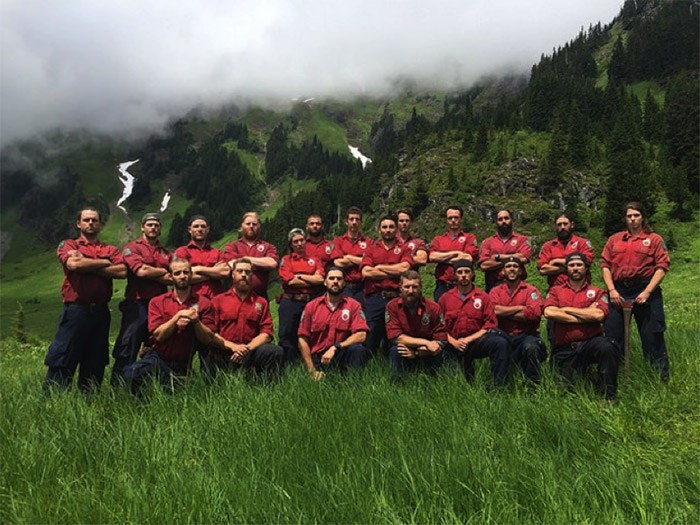 Photo: Shirley Davies
Photo: Shirley Davies
Sitting around a crackling campfire is a rite of passage for many British Columbians, but we all instinctively know that such a fire — if allowed to get out of control — can become a wild and scary beast.
When wildfire threatens our homes and communities, we usually will seek a safe refuge. However, people like boss Matt MacDonald do the opposite. He and about 1,500 of his peers deliberately seek out and attack wildfires that threaten the beautiful landscapes of British Columbia every year.
“A B.C. wildland firefighter needs to be able to adapt,” MacDonald explains. “We have some of the steepest mountains and biggest trees in the world. We also have desert and swampy muskeg.”
Firefighters like MacDonald often have to slog across difficult terrain while carrying loads of up to 30 kilograms, just to reach the fires they have to fight.
The tools that they carry are fairly simple: “Pulaski” tools to clear brush; chainsaws; lengths of water hose; and water pumps. But when that gear is combined with the firefighters’ intense training regimen and an effective command structure, B.C.’s fire crews are among the most effective and respected in the world.
They have to be. With an of over 1,700 wildfires burning over 130,000 hectares throughout the province each year, B.C.’s fire crews are kept busy.
Between April 1 and Aug. 15, 2016, burned over 97,500 hectares. This all adds up to a lot of work for the men and women who, like MacDonald, spend between four and eight months of the year protecting our wild places and the communities that border on them.
Outside of the main fire season, BC Wildfire Service staff identify areas that face a high wildfire risk and then take steps to minimize that risk. Areas with lots of brush or dead trees — all potential fuel for a wildfire — are treated by lighting “prescribed burns”. These carefully controlled fires mimic small-scale, naturally occurring fires that actually help .
Crews also work to clear brush around communities and First Nations to reduce the risk of a forest fire endangering inhabited areas. MacDonald says that running practice drills and maintaining physical fitness are key elements of their “downtime” back at base.
“Research shows that crew fitness is one of the biggest factors in staying safe when we’re out there,” he explains. “We can get sent anywhere in the province or even the country for up to two weeks at a moment’s notice.”
With 40 per cent of all wildfires in Canada caused by human activity, the public has a major role to play in minimizing their dangers. Over the B.C. Day long weekend alone, the BC Wildfire Service responded to an estimated 98 abandoned campfires provincewide.
MacDonald encourages people to become familiar with the . It offers clear examples of how individuals can help protect their communities and make the fire season safer for front-line firefighters.
Now in his ninth season with the BC Wildfire Service, MacDonald doesn’t see any reason to quit climbing up and down mountains to do the dangerous, demanding work of putting out wildfires.
“It’s pretty honest work and you feel good doing it,” he says.


